
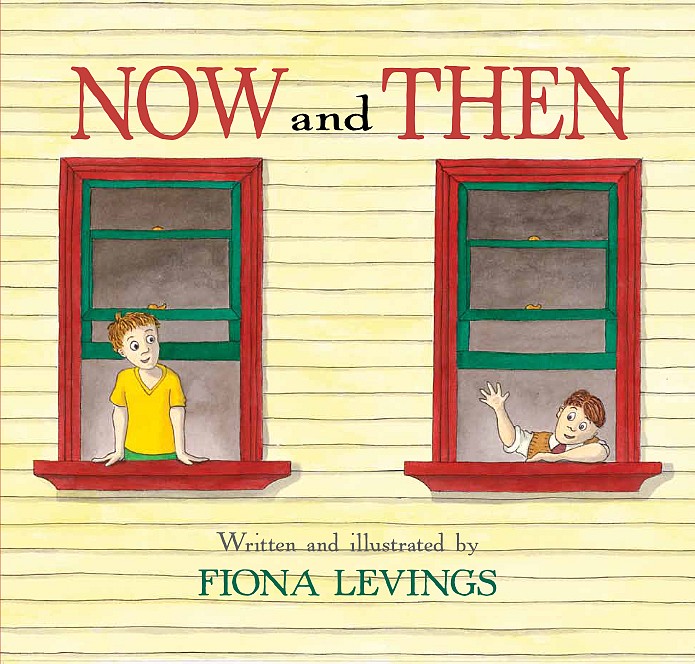
Now and Then written and illustrated by Fiona Levings and published by Forty South Publishing is a non-fiction picture book which explores the stories and similarities that connect the lives of seven year old Doug in 1940 with eight year old Jem in 2019. Doug lived in the same house located in the seaside town of Margate, Tasmania in 1940 that Jem resides in with his family in 2019. On each double page spread you see Jem’s story on the left hand page and Doug’s on the right which allows for direct comparison between the different times. The illustrations are wonderfully detailed and provide so much information about the ways in which the environment and way of life has changed enormously over the past eight decades. The succinct text paired with the illustrations inspires children to contrast and compare the developments and social, environmental and economic changes that have taken place over the eighty years. This book explores the themes of community, continuity and change.
On Fiona’s website there are comprehensive teacher notes (available via the resources tab)
This title can be purchased via Fiona Leving’s website here.
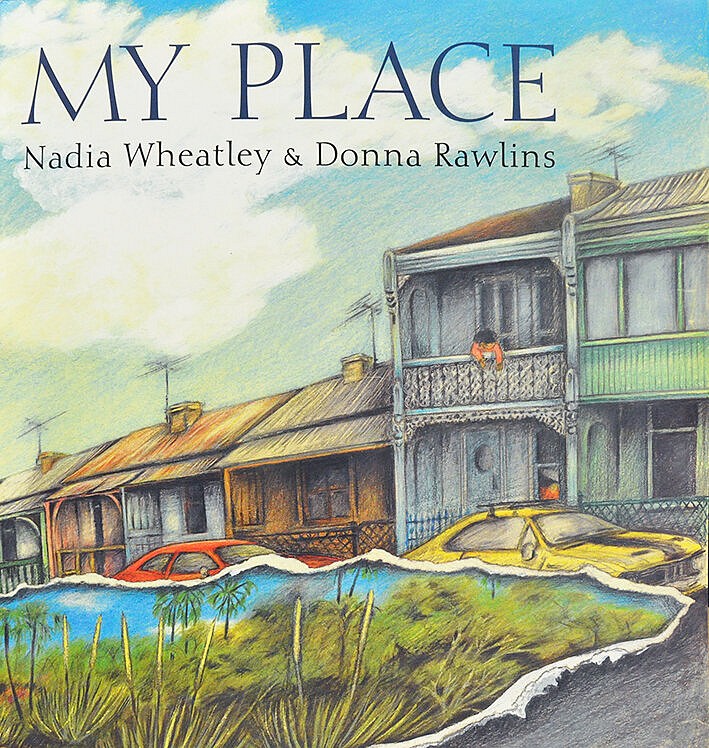
My Place by Nadia Wheatley and illustrated by Donna Rawlins takes the reader on a journey back through time from 1988 back to 1788. This story begins with ten year old Laura, she introduces the reader to her place (her home, now regarded as inner Sydney), her family and gives some background information about how her family came to live there. A hand drawn map, showing the street, landmarks and some details in the surrounding area is included. The story then moves back through time, decade by decade, with other children, who reside in the same home, sharing details about their family history, culture and world events from their lived experiences living in the same place. With each new decade there is a map illustrating the same area and surrounds. The second last story and hand drawn map in the book relates to a young boy, Sam, a convict sent from London to Australia. The final story set in 1788, is that of Barangaroo, sharing details about his family and culture.
The hand drawn maps serve to highlight the way the land transformed over two centuries. While the land dramatically changes from a modern urban area to an area with less residential development, fewer shops and gradually to more rural land uses. Then in 1798 the land is heavily vegetated a creek is full and flowing, there is one constant – a grand fig tree.
This book is brimming with history and interwoven into each of the children’s stories is information about global events as well as domestic events and Australian government policy (such as conscription to the Vietnam War). Each child shares how they and their family are impacted by world events. The story highlights that many of the children were immigrants, lured to Australia for an opportunity to work, for example during the Gold Rush. There are references to popular culture too at the time, for example in Sofia’s story for 1968, there are pictures of Paul McCartney from the Beatles in Sofia’s room.
The atmospheric illustrations deftly capture each decade and have so much to unpack. For example, the dark colours used in 1938 are reflective of the time period, during the Great Depression and shares the experience of a neighbour being evicted.
The story begins with a colourful and illustrated timeline documenting the information in the book plus two more pieces of information (1988 – Mabo and Wik Judgements recognise Aboriginal people as the traditional owners of the land and 2008 Australia says sorry to Aboriginal people). The timeline fittingly starts with Barangaroo’s grandmother explaining to him that Aboriginal people have belonged to this place “for ever and ever”.
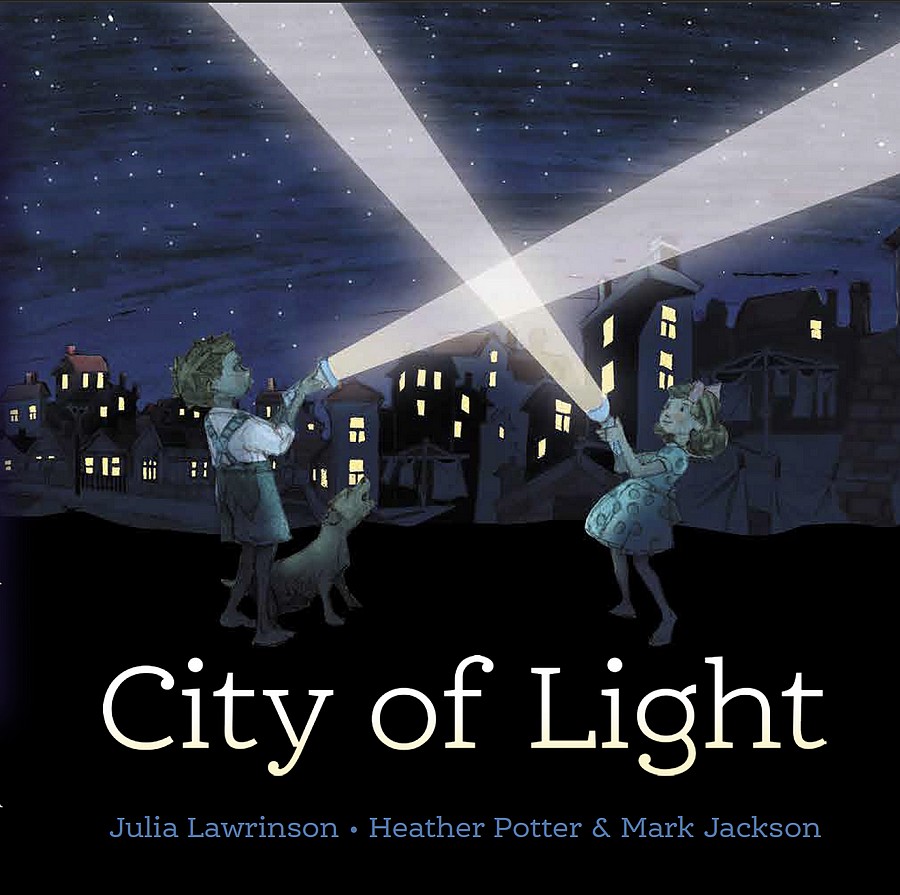
City of Light by Julia Lawrinson, illustrated by Heather Potter and Mark Jackson and published by Wild Dog Books is based on a fascinating and inspiring true story. This is a story about two children whose insatiable curiosity, sense of wonder and imagination spurred them to action to seek the support from their community to light up their city of Perth to see if American astronaut, John Glenn, the first American to orbit earth, could see their city from the rocket ship. This is a hopeful book about the power of community, connection and the unwavering belief that a small group, no matter how old, can make a difference and achieve results beyond their wildest imagination.
This book transports the reader back sixty-one years to February, 1962. At this time, there is much excitement and hype as people see on their televisions and read in the newspapers that John Glenn is going to orbit the earth and fly over Perth on the night of February 20. This sees two children question, wonder and deeply think about what it is that the astronaut will see from the rocket ship. In the story “huge things, giant things” are mentioned that may be seen from space (the Pyramids, the Amazon River, the Grand Canyon). The children wonder what it would take for John Glenn to see their city and it is in this thought that an idea strikes. What about if everyone turned on their lights?
With this thrilling premise the children spring to action informing their neighbours and community of their idea. At a time before the internet and social media, the children spread the word far and wide by visiting their neighbours, phoning family and creating signs to attract attention and raise awareness.
The residents of Perth band together in a united attempt to light up their city so it might be seen from space. The people are resourceful and hang white sheets on their clotheslines and place lamps underneath to reflect the light, torches are utilised and verandah lights are switched on. Perth is well and truly lit up, so much so, that John Glenn could indeed see this sight as he orbited the earth and dubbed Perth “the City of Light”. The last page includes a quote from John Glenn, “The lights show up very well and thank everybody for turning them on, will you?”
The atmospheric illustrations deftly capture this time through the clothing, architecture, streetscapes and in the illustrations of the family in different rooms in their home. It is fascinating stepping back to a time that depicts a small screen television with an aerial for reception minus any remote controls, Holden cars, a father smoking a pipe, a radio, Hills Hoist clotheslines in the backyards, a rotary dial up phone and the family toilet outside to name a few observations featured in the illustrations. At the end of the story are several illustrations showing John Glenn in space, bringing this historic moment to life.
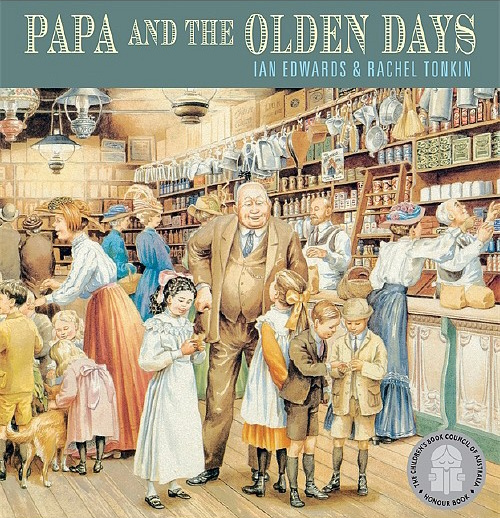
Papa and the Olden Days written by Ian Edwards and illustrated by Rachel Tonkin was a Children’s Book Council of Australia 1990 Honour Book in the Younger Readers category. This book has been inspired by the illustrator’s family history as she has recorded and preserved her father’s stories about growing up in Thoona, a north-eastern Victorian country town in Australia, in the early 1900s. Meticulous research has been carried out, making this a reliable historically accurate source and captivating insight into a slice of Australian history. There are a range of stories included that reflect the values and life in country Australia in the early twentieth century. There are tales, often humorous, about the general store stocked to the brim with an assortment of foods, household items, clothing, hardware and all kinds of fascinating items from the time (some creative ingenuity certainly went on to lure customers into the store). The reader gains an insight into the way leisurely days were spent with family and friends and enjoying past times. Families came together to create their own entertainment as there was no electricity, television, radio, internet or modern amenities. The reader is transported back to school in the early 1900s and learns about some games the children played. The magical tales about Christmas time are heart-warming to learn about, such a sense of community and generosity existed.
While this book is a portal to another time, there are similarities that can be drawn between now and then. So many rich discussions could be inspired by this story. There are examples of crafty tactics the general store employed to attract customers. Children could consider ways buyers are tempted today (consider not just brick and mortar stores. What other shopping experiences are enjoyed today and how do these remain competitive). There are several pages in this book that give an insight into family time. Readers could compare and contrast the way families in the early 1900s enjoyed quality time together with activities and experiences their own family relish. It was interesting to read the text, “Good neighbours meant a lot in those days”. Children could consider this quote and how it relates to them personally. Do they know their neighbours? Do they spend time with them and if so in what capacity?
The differences that exist between the past and today as well as how life has evolved over time are fascinating to read in both the text and highly detailed illustrations. There are references to the imperial system for measurement (measuring weight in pounds and distances in miles). Readers will enjoy comparing the fashion, homes and the living areas from the past with that of today. Children could plan a trip to go shopping in the early 1900s and compare it with the same experience today (consider everything from clothing worn, the transport, how long the trip will take and any other considerations that may need to be thought out prior to making the trip). The story shines a light on values that were held highly at the time and it makes for an interesting discussion (or even debate) whether or not the values that were respected then are the same as those now.
Rachel Tonkin’s incredibly detailed illustrations brimming with nostalgia add to the story and provide so much additional historically accurate information about life in country Australia in the early 1900s. Within each illustration there are many stories to unpack. Readers gain a real sense for a day in the life of a person living in this community at that time. Be sure to keep an eye out for either a dog or cat that appears in each illustration.
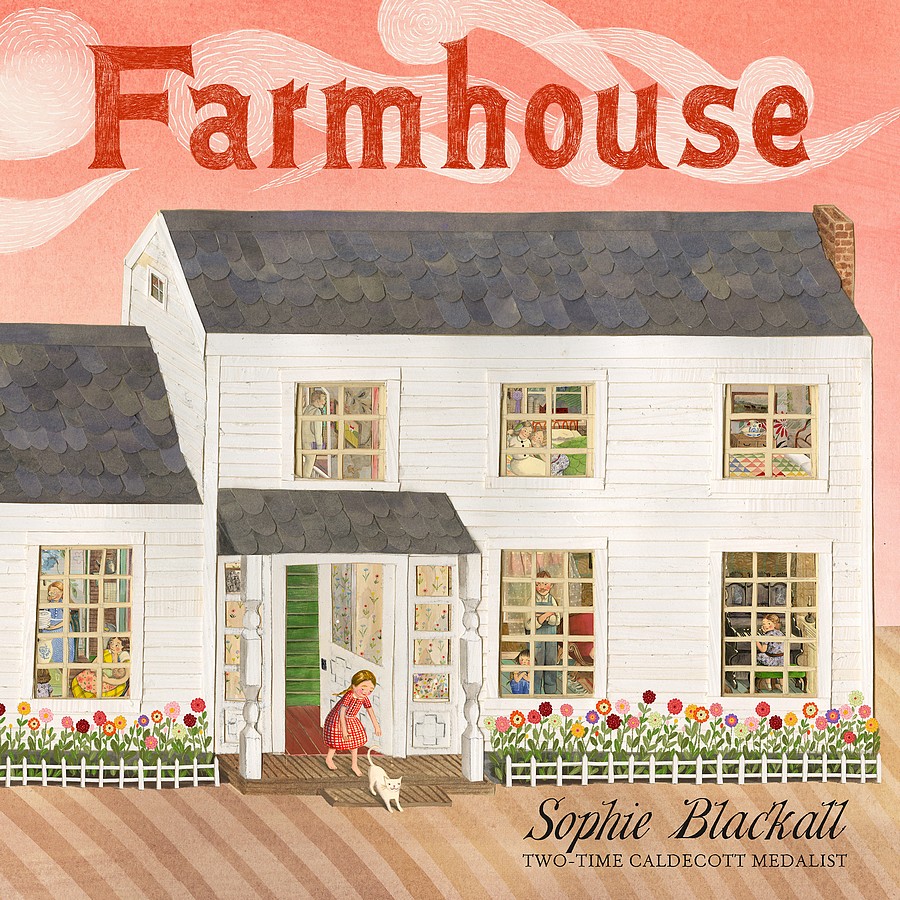
Farmhouse by Sophie Blackall is an exquisite book that transports the reader back in time to a farmhouse that was built in the 1850s, however was home to the Swantak family in the 1930s and 40s. This is a beautiful tribute to the past, a celebration of family history and the power of stories. The illustrations are stunning and exquisitely detailed bringing a bygone era to life. Sophie has used salvaged pieces from the house as clues to help her piece together the story of this family and used these to create collages in her illustrations.
This book is a glorious window into the different seasons of life this family, with twelve children, experienced in the 1900s. The reader can immerse themselves in their world, their trials and tribulations, as the lilting text and illustrations reveal much about their daily routine, the foods they ate, chores they did, their interests and what life was like on a working farm at this time. The illustrations demand to be savoured as they are such a wonderful stimulus to contrast the modern day with the past as readers can compare the furniture, kitchen utensils, transport, clothing, farming equipment, the way the children spent their time and how they amused themselves.
Sophie explains in the story that the last family member left the farm and the house became abandoned. With no one to care for the house it fell into disrepair and became a home to many creatures. The story for the farmhouse did not end there. Sophie collected pieces from the home, spoke to descendants from the Swantak family and in her own home used this information to honour and reimagine their story and that of the farmhouse. In the author’s note there is further information about discovering the farmhouse, the research process as well as more information about the illustrations.
The endpapers are very much part of the story. The front endpapers contain some of the pieces Sophie recovered from the farmhouse (wallpaper, fabrics, lists, print sources, drawings and pieces created by the children). The endpapers contain photos of the house when Sophie discovered it as well as a photo of the handmade dresses that were smothered in mud that Sophie was able to clean and use in her collages to tell this story. The dust jacket of the book features the outside of the house with windows where the reader can have a peek inside and observe what the family is doing. However, under the dust jacket the cover of the book reveals the inside of the farmhouse, another layer to the story.
This is an astonishingly beautiful book steeped in nostalgia, supremely and richly detailed and tenderly reimagines the life of the Swantak family in their farmhouse.
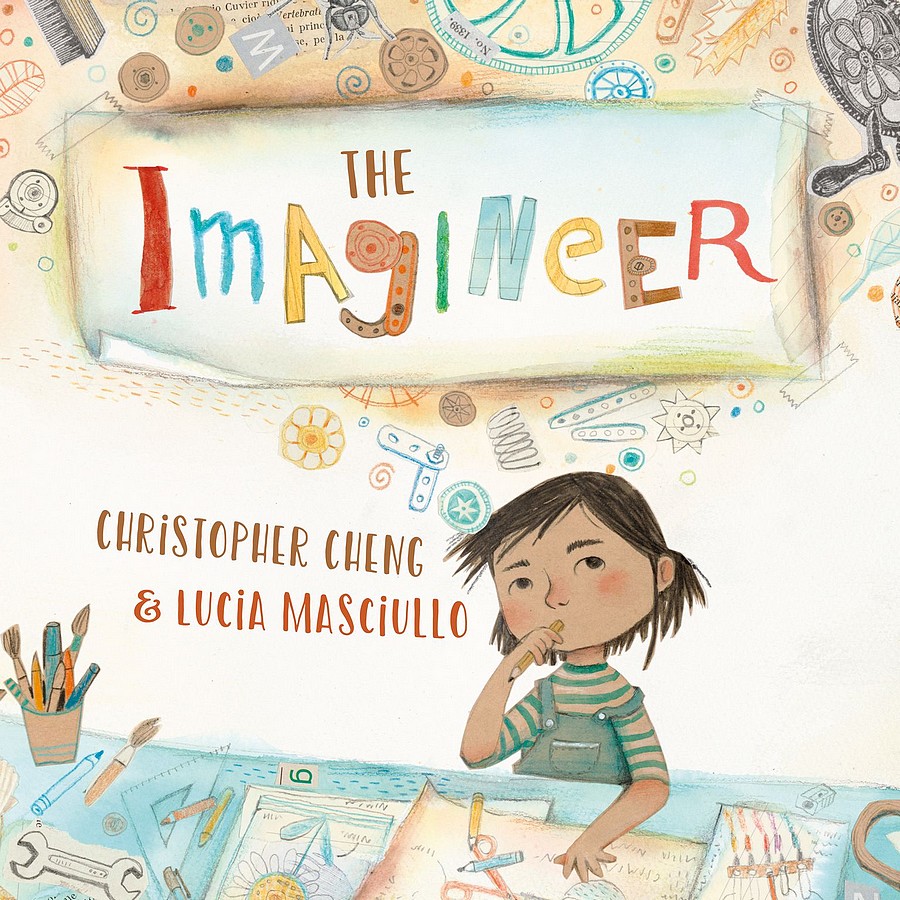
The Imagineer by Christopher Cheng and illustrated by Lucia Masciullo is a National Library of Australia publication and is a sheer delight to read. In this book, Penny is an Imagineer. She uses her imagination to plan all sorts of contraptions and gadgets and enjoys sketching, planning and scribbling out all of her creative ideas. She is fascinated with how things work and gets a great deal of satisfaction from deconstructing things and putting them back together. Her inquiring mind is curious, always seeking out solutions, scrutinizing, questioning, problem solving and being patient with the process of trial and error, because that’s how she gets results. Penny finds inspiration all around her and finds alternative uses for everyday items to repurpose or recycle them into all sorts of wonderful items.
Penny lives in a small apartment so she is excited to visit her Grandpa who resides in an enormous house, a place full of all kinds of pieces that Penny can draw inspiration from and create with. Going to her Grandpa’s house is like taking a step back in time as Penny explores many of his items from the past – she slices potatoes with her Grandpa’s mandolin, uses a butter churn and learns about other fascinating items from her Grandpa who tells her that “everything has a purpose. Everything has a job to do.’’ The greatest discovery comes when Penny ventures outside and finds Grandpa’s shed brimming with treasure for Penny to investigate and analyse. Grandpa takes great pride sharing with Penny what the pieces were once used for. Penny’s imagination is alight and ready to build…but what? All is revealed in the most magical double page spread that folds out. At the end of the story there are several pages featuring ‘tools for imagineering’, these are illustrations and descriptions of twenty gadgets from Grandpa’s past. Following this is a list of images from the National Library of Australia collection showing gadgets from the past.
Lucia Masciullo’s watercoloured, pencil and collaged illustrations pique the readers curiosity as they are full of details waiting to be spotted and stories begging to be told. The illustrations deftly capture the emotions Penny and Grandpa experience. They blend perfectly with the narrative to create a beautiful story that celebrates the joy and satisfaction to be found in tinkering, questioning, creating, imagining all sorts of possibilities and learning from older relatives. A final word… Be sure to soak up all the glorious details on the exquisite endpapers.
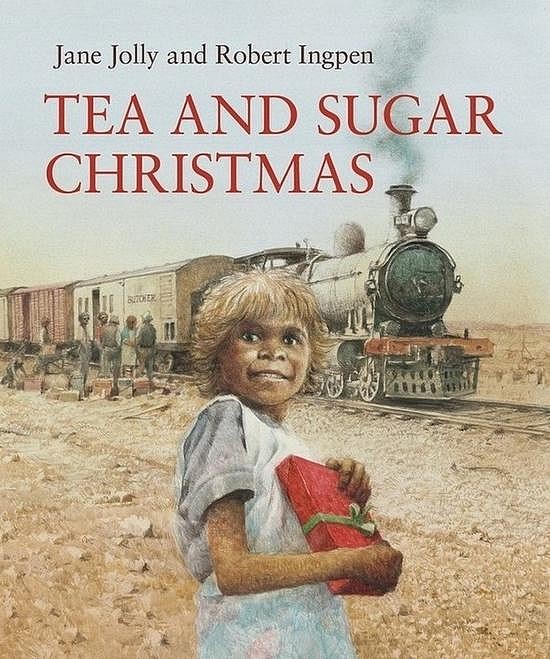
Tea and sugar Christmas by Jane Jolly, illustrated by Robert Ingpen and published by National Library of Australia. Review to come for this book.
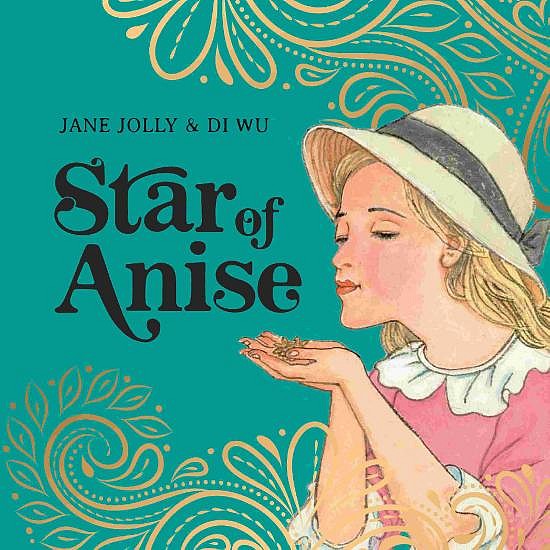
The Star of Anise written by Jane Jolly, illustrated by Di Wu and published by National Library of Australia Publishing is a 2022 CBCA Notable book in the Picture Book of the Year category and brings to life a slice of Australian history from the 1850s that is lesser known.
This gentle story is set in the Australian outback and explores a time when Sikh hawkers, Indian men from the Punjab, travelled on horseback with a wagon full of wondrous wares to sell. In this story two children delight in the pleasure of hearing Bhagwan Singh’s wagon before it comes into view. The wagon fills them with anticipation as to what glorious surprises it may hold this time. This treasure trove on wooden wheels has items that jingle and jangle, colourful ribbons that command attention and a friend, Bhagwan Singh, driving. He is clearly excited to see the familiar faces of Annie and Arthur.
Bhagwan warmly greets the children who are enraptured with him. The children are eager to see what is inside the wagon and Bhagwan helps them climb up and peruse the exotic wares, including “silks from Kashmir, soaps from Morocco, spices from Ceylon”. They explore inside the wagon, full of rich colour and textures, shimmering and glistening handcrafted items, enticing scents and a diverse range of selcouth goods. Such a glorious feast for the senses!
Annie’s eyes catch the gleaming sparkle on a piece that Bhagwan had promised on his last visit that he would bring this time. Arthur quickly becomes captivated by a highly decorated and ornate penknife. Still, there are more treats to come in the form of foods. Annie indulges in a meal Bhagwan prepares. It is a treasured family recipe and is an exciting and unprecedented experience for her. She is introduced to chakra pool, known in Australia as star anise. This captivating shaped and deeply scented spice transports Annie to another land. Just as Bhagwan gifts Annie with star anise from his home, she gifts him with a little piece of Australia.
Jane meticulously researched this book and seamlessly weaves much factual information into the story, including fascinating details such as Annie taking Bhagwan’s turban to her Mum for her to wash. At the end of the story is factual information from National Library archives about Hawkers in Australia. This information explores the history of hawkers, Afghan and Indian hawkers, Sikhism in Australia, the process for becoming a hawker, an explanation detailing what the work of a hawker involved and the hawker’s relationship with the community.
Di’s evocative illustrations created with watercolour, pencil and pastels using a soft pastel colour palette enrich the narrative, providing further clues about Australia in the mid-1800s and transport the reader back in time. He deftly captures the children’s excitement of Bhagwan’s arrival to their remote home and how this experience was such a novelty for them. The delight and wonder the children feel is palpable in the illustrations as is the enjoyment they feel when interacting with Bhagwan.
This story highlights the joy and beauty that comes from embracing different traditions and the gift it is to learn from others with rich stories and experiences to share. This was a time when indelible memories were made, invaluable friendships shared and communities enriched by migrants from India who came here for a better life and in doing so contributed to a better life for many people living in rural Australia.

Grandpa Green by Lane Smith is a heart-warming exploration of a personal history recorded through a topiary garden. The fanciful trees hold memories and represent different time periods from Grandpa Green’s life. The narrator in this story is the great grandson, who reflects on his great grandpa’s life as he takes the reader on a journey through his garden and life timeline, represented with topiary trees.
He begins with his great grandfather’s birth (a tree in the shape of a crying baby), through his childhood on a farm including succumbing to a childhood illness where he didn’t attend school and read stories (represented in the garden with characters from several classics), his time serving in a world war where he met his future wife and their happy life they shared, all represented in intricate topiary trees. While walking through the garden the great grandson is collecting various items that he seems to find along the way which he returns to his great grandpa when he spots him creating in the garden. The great grandchild goes on to say that Grandpa Green no longer remembers everything (hence why he collected gardening items, his glasses and other items that were lying in the garden), “but, the important stuff, the garden remembers for him”. The final double page spread which opens out is such a treat, especially when the creation he is currently working on is revealed.
This is a book that deserves to be savoured as more details in the meticulously pruned bushes and illustrations reveal themselves and more of Grandpa Green’s story comes to light when lingering on the pages.

The Fabulous Friend Machine by Nick Bland is a cautionary tale with a modern twist that explores the impact of technology, messaging and online social interactions on real life social dynamics. Popcorn the chicken at the beginning of the story is extremely social, eternally optimistic, caring, helpful, encouraging and a source of comfort and joy to all of the animal friends on the farm where she resides. Popcorn lives life fully and with such zest.
Dazzled by the light from a machine and then the instant responses that pop up from her new “friends”, Popcorn gradually loses her joie de vivre as she is all consumed by the enticing technology. Popcorn becomes absent minded, unavailable for her friends on the farm and neglectful towards them.
How will her farm friends react and what of the new “friends” Popcorn makes from her “fabulous friend machine”?
This story is a gateway into conversations about friendship and what that may and may not look like, comparing and contrasting online friends with real life friends, considerations that must be taken into account when communicating behind a screen and exploring the negative and dangerous aspects of socialising online (to time, health, friendships, safety).
